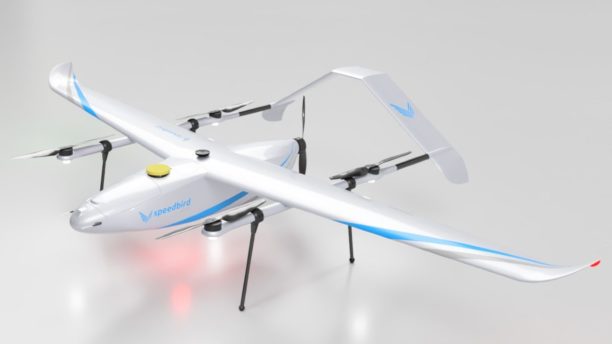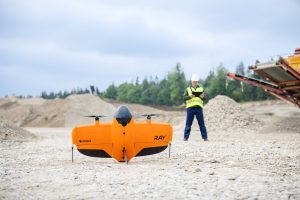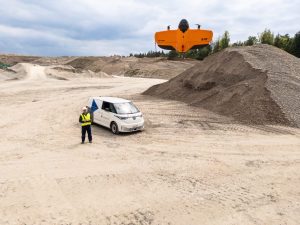Drone Industry Faces Disruption: Trump’s Tariffs on Brazil
The recent announcement of a 50% tariff on all Brazilian imports by President Trump, slated to take effect on August 1, 2025, has sent shockwaves throughout the global drone industry. This move, labeled as a significant supply chain shock, has implications for manufacturers, innovators, and users in the United States. Although most attention centers on traditional Brazilian exports such as coffee and beef, the drone sector could face enduring consequences.
Why Has Brazil Been Targeted?
The rationale behind President Trump’s decision is both economic and political. On July 9, 2025, a Section 301 investigation was ordered against Brazil for what were described as unfair trade practices, including barriers to U.S. digital platforms. Additionally, Trump criticized Brazil’s prosecution of former President Jair Bolsonaro, calling it a “witch hunt.” The new tariff, which adds to an existing 10% baseline, represents an increase in trade tensions.
Brazil has indicated it will impose reciprocal tariffs as per its economic reciprocity legislation. This could lead to a tit-for-tat situation affecting various industries.
The Dependency on Brazilian Drone Components
Brazil may not be the first name that comes to mind in drone component sourcing, but its role is crucial. The country provides essential parts including carbon fiber frames, specialized sensors, and propulsion systems, particularly for agricultural and commercial drones.
- Carbon fiber frames: Valued for their strength-to-weight ratio, Brazilian carbon fiber is a cost-effective option for many U.S.-assembled drones.
- Sensors and electronics: Advanced sensor components from Brazilian suppliers are integral to the industry.
- Propulsion systems: Innovative Brazilian firms supply motors and powertrains vital for specific kinds of drones.
These tariffs hit as the drone industry is already stressed by restrictions on Chinese UAV parts, mandating a diversification of suppliers.
Immediate Impacts: Rising Costs and Delays
Industry experts anticipate several consequences:
- Rising costs: Smaller manufacturers without the purchasing power of big companies like DJI may face substantial cost increases.
- Delays in supply chain: Shipments in transit might encounter logistical challenges due to new tariffs.
- Sourcing issues: Companies dependent on Brazilian inputs must seek alternative suppliers quickly.
A representative in the sector noted, “Sourcing specialty carbon frames from Europe or the U.S. will be more costly and perhaps less reliable.”
Long-Term Effects on the Drone Sector
The repercussions of these tariffs will extend beyond immediate financial impacts:
- Supply chain shifts: More production might move closer to home or to less politically sensitive countries, increasing costs.
- Consolidation: Smaller startups, often the source of innovation, might not survive the increased costs.
- Geopolitical risks: As trade is weaponized, supply certainty becomes as crucial as cost and performance.
The Geopolitical Role of Trade Policy
Trump’s tariffs not only aim to regulate trade but influence domestic policies abroad. By tying tariffs to Bolsonaro’s prosecution and actions against U.S. digital firms, the administration seeks political change through economic means. However, such tactics carry risks, possibly prompting Brazil to strengthen relations with alternative partners like China.
Case Study: SkyHarvest
Consider SkyHarvest, a U.S. agri-drone startup reliant on materials from Brazil. The tariffs bring significant challenges:
- Component import costs rise by 50% immediately.
- Production schedules face disruptions as contracts are renegotiated.
- End-users, such as farmers, might experience cost or delivery delays.
SkyHarvest’s founder remarked, “We didn’t expect drone manufacturing to navigate such a political landscape, but we must master both engineering and diplomacy to thrive.”
Strategic Advice: Navigating a Turbulent Market
What steps can drone businesses take amid these challenges?
- Conduct a comprehensive supply audit: Identify all component origins and dependencies on Brazilian and other critical suppliers.
- Supplier diversification: Foster relationships with multiple suppliers to mitigate risks.
- Stay informed on policy developments: Regular updates on trade policies are crucial.
- Innovate locally: Invest in research to qualify alternative materials or suppliers domestically.
- Transparent communication: Keep clients informed on how tariffs may impact them.
The Human Element: Collective Resilience
The drone industry is known for its innovation and adaptability. However, the current challenges transcend engineering, rooted instead in political dynamics and global alliances. The industry’s goal remains: maintaining open and innovative skies. As one manager put it, “It’s not just about drones; it’s about building bridges globally. If tariffs add obstacles, we’ll simply have to be smarter.”
Conclusion: Finding Opportunity in Disruption
While challenging, these disruptions also fuel innovation. They encourage the development of more resilient, transparent, and diverse supply chains, potentially driving investment into domestic manufacturing. The future of drone independence from fragile supply lines relies on policymakers and industry leaders working collaboratively.
Borrowing a line from Star Wars, a drone enthusiast might say, “May the supply chain be with you—regardless of the political landscape.”













